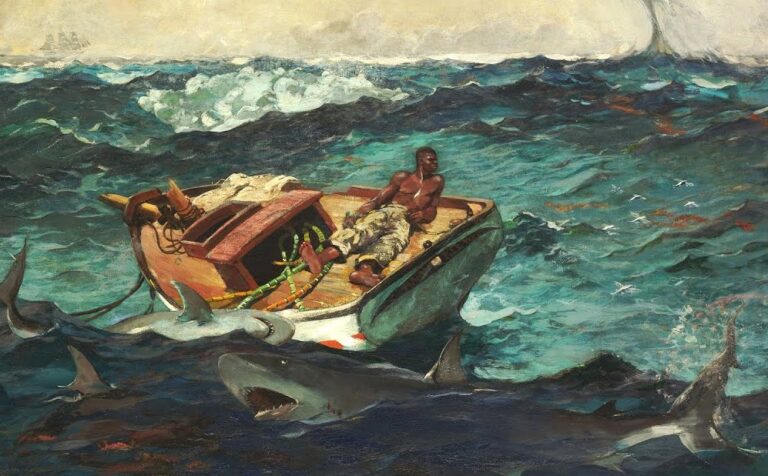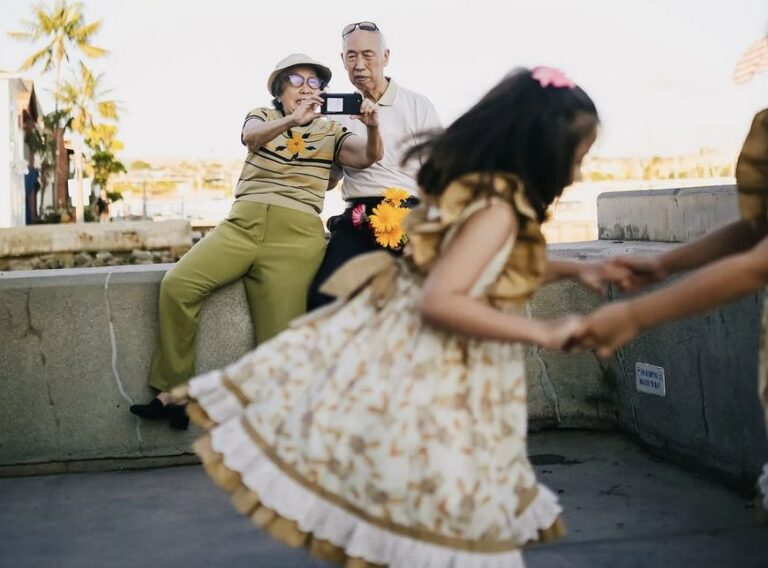Many people believe Winslow Homer to be the best American artist of the 19th century. Homer always had a passion for the ocean, so in the 1880s, he relocated to Maine’s coast to paint sea scenes. In addition to capturing the sea, he often created “man versus the elements” scenarios that demonstrated the ocean’s might, particularly during a storm.
Later, Homer gave up painting people and concentrated only on the sea, frequently capturing ferocious, severe weather. Homer is regarded as the greatest American seascape and maritime painter of all time because, while seeing his works, it nearly feels as though you can experience the splash of the breaking waves.
You may learn about Winslow Homer’s original painting approach by browsing the extensive list of Winslow Homer Prints. Also, check out some of Winslow Homer’s maritime artwork below.
Weatherbeaten
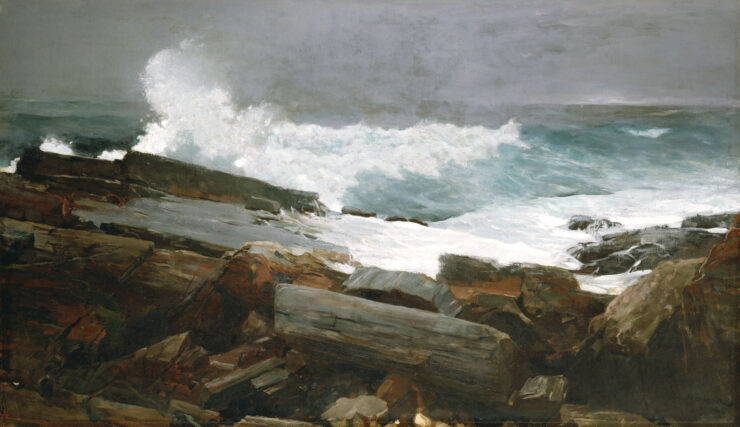
Homer’s ethereal seascapes hint at a turn away from his Realist leanings and toward the Romantic realm of the sublime. Weather-beaten captures a recurring theme in his latter career: the craggy shoreline of Maine on a foggy, cloudy afternoon. It was created using the fluid brushstrokes he had developed since the 1870s.
This lone image of a barren sea awakens the viewer’s senses. Homer based his depiction of the area on observations, although he erased some scenic views to highlight the sea’s eternal reach. The roar of the waves, the salty water’s odor, the feel of the weathered rocks, and the fresh mists coming from the rolling waves may all be imagined.
These kinds of works provided the American populace with stability during a time when the impacts of fast industrialization led to significant socioeconomic shifts and social unrest. The endless cycles of nature grab the observer instead of urban and industrial life. This piece is an example of some of Winslow Homer’s watercolor paintings.
The Fog Warning
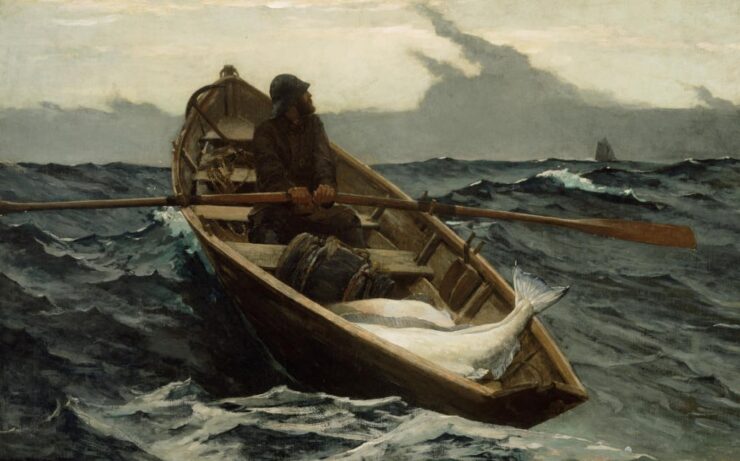
The fog warning is one of the finest Winslow Homer prints. Mostly in the summer of 1884, artist Winslow Homer traveled to Cape Ann, located in Massachusetts, to draw and observe the trawlers of Gloucester. Winslow ultimately created the drawing to get higher oil compositions while continuing to transport coal on schooners.
In this Winslow Homer painting, a fisherman is guiding a dory that is hauled down by two or more massive halibut weights. The fisherman dons his belt as the boat strikes a wave and casts his gaze towards a large schooner, or as one reviewer called it, a “thick, menacing cloud” in the sky.
Winslow frequently depicted loneliness in his drawings and paintings, emphasizing its lonely qualities and treating the topic from several angles. He may have drawn inspiration from the sailors he encountered or the stories he overheard during his time with them to produce this wonderful painting.
Breezing Up (A Fair Wind)
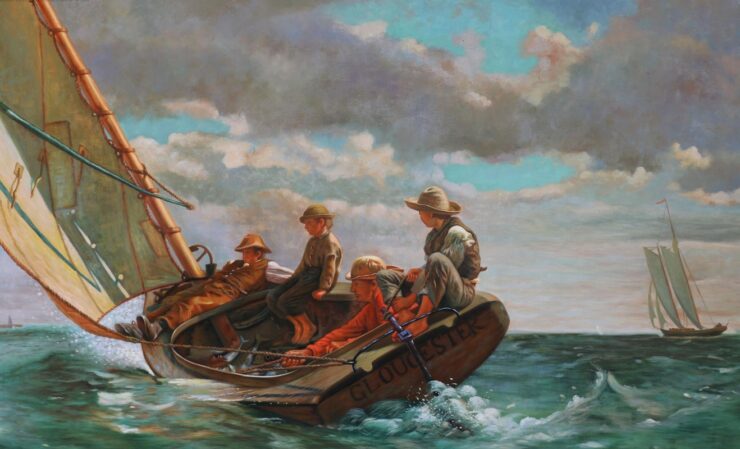
Breezing Up (A Fair Wind), shown to critical acclaim, depicts a hardworking dad and his three boys on a catboat in the afternoon. Unfortunately, the fishing boat appears to be going to rush away from the viewer, like a contemporary photograph, with the peak of its mast completely cut out of the artwork.
A giant sailboat gently passes in the background, in contrast to the little craft’s impression of urgent pace. Like in his early works, Homer rendered the landscape objectively and without feeling.
The sons’ adolescent attitudes, engrossed in their thoughts, and lack of awareness of the demands of the adult world contrast with the father’s severe expression as he controls the little boat. This piece, one of artist Winslow Homer’s most beloved portrayals, may have benefited from the delicate contrast.
His brief trip to France the previous decade is evident in this straightforward picture, whose tonality seems very American. The topic reflects his concerns and those of the French Realist artists, who also placed the working men in the composition’s front foreground.
Homer’s gestural brushstrokes also change; they grew more certain following his trip to Paris, especially in the sky and the sea. The juxtaposition of close-up items against those found in the deep backdrop, seen from a little higher posture, shows a tribute to the principles of Japonism. Breezing Up foreshadows elements that will reappear and dominate his output following his second journey to Europe in 1881, both in terms of form and content.
The Herring Net
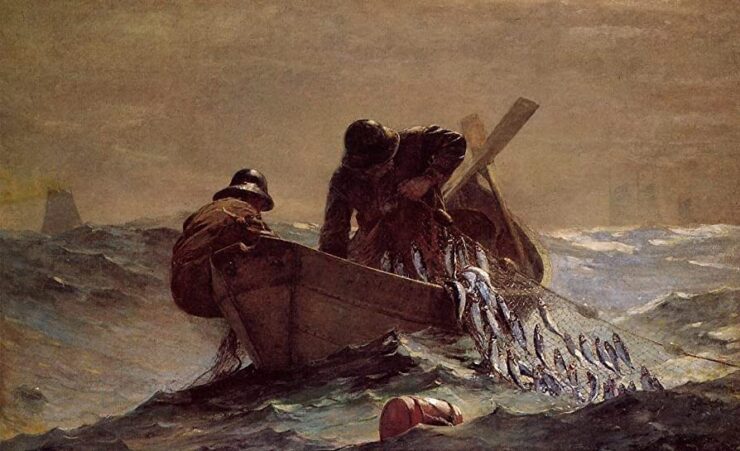
The Art Institute of Chicago has The Herring Net on display. It is a masterpiece with outstanding composition, color scheme, and brushwork. The fishing boat travels on top of one wave while a bigger wave lurks behind it at the edge of a trough.
The sea heave puts the center group’s sturdy pyramid in jeopardy. Two fishermen who remain unidentified behind their helmet-like caps pull the trawling net into their boat. The fisherman, seated partly outside the dory, balances the weight of the haul while the net glitters with the glittering treasure of silverfish.
The schooners that took squadrons of dories into the fishing seas may be seen in the hazy background on the left and right sides. Before darkness or fog concealed the mother ships, fishermen had to return.
When a buddy rowed Homer out to the fleet in 1884, drawings that eventually became this picture were created. The companion recounted the enormous fleet of herring that landed off Prouts Neck that summer.
Conclusion
It is clear from these paintings why Homer’s sea visions inspired so many painters. The same scene that had inspired Winslow Homer inspired his admirer, Kent, who journeyed to Maine’s rocky beach to paint.
The influence of Homer endured into the 20th century, particularly among artists who largely shunned the European-inspired modernist movements and stayed dedicated to articulating an exclusively American voice. Winslow was a very exceptional artist with a great love for maritime art.
Related Posts:
- Top 10 Best Paint Sprayer For Cabinets 2024 -…
- 12 Best Car Wax For Black Cars 2024 - Protection and…
- 20 Best Gaming Headset Under 50$ 2024 - for PC, PS4,…
- How Expedition Art Can Change Your World View
- Top 10 Best Inflatable Kayak 2024 - for Exploring…
- Georges Lebar Age, Height, Career, Relationship, Net…

